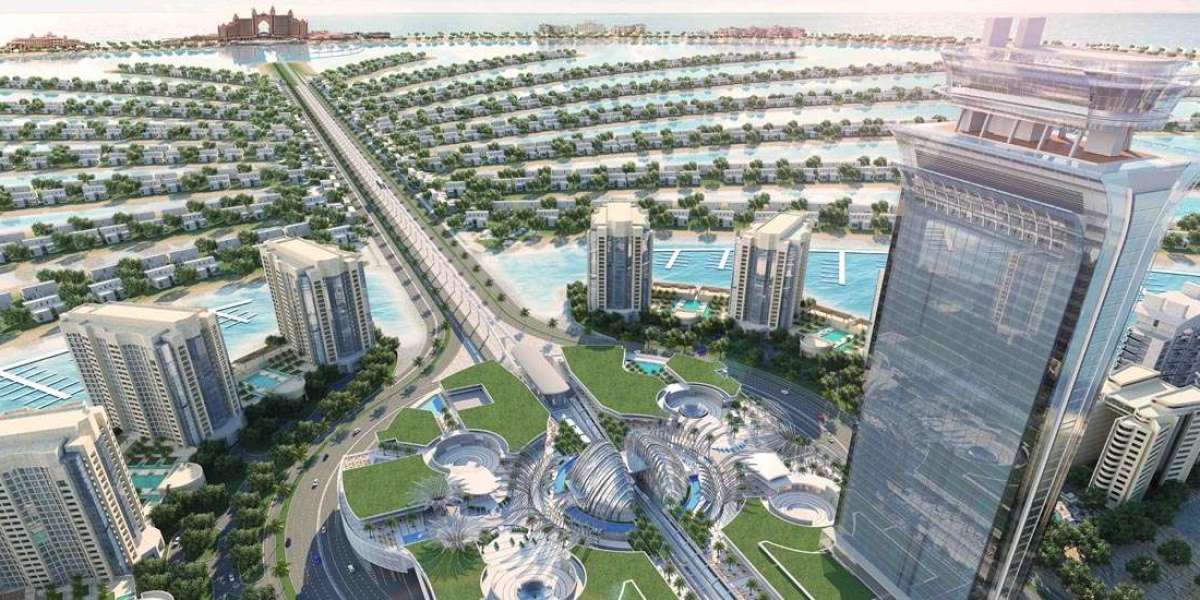Dubai, a city known for its audacious architectural marvels, is home to one of the most ambitious projects in the world - Palm Jebel Ali. Emerging from the depths of the Arabian Gulf, this man-made wonder stands as a testament to human ingenuity and the relentless pursuit of pushing boundaries. In this article, we embark on a journey to explore the evolution of Palm Jebel Ali, tracing its inception from a visionary concept to the coastal wonderland it has become.
The Genesis of Palm Jebel Ali
The idea of creating artificial islands in the shape of a palm tree was conceived by the visionary minds at Nakheel, a leading property developer in the United Arab Emirates. Inspired by the success of the Palm Jumeirah, Nakheel aimed to take the concept to new heights with Palm Jebel Ali. The project was officially announced in 2002, capturing the world's attention with its sheer audacity.
The vision for Palm Jebel Ali was nothing short of grandiose. The palm-shaped island, extending into the Arabian Gulf, was designed to be larger than its predecessor, featuring an array of residential, commercial, and entertainment developments. The scale of the project was staggering, with the palm fronds housing a diverse range of amenities, including luxury villas, hotels, and theme parks.
Engineering Feat: Creating an Island in the Gulf
Turning the vision into reality required groundbreaking engineering and construction techniques. The process involved reclaiming land from the sea, a task that presented unique challenges. Extensive dredging and land reclamation were employed to create the palm-shaped island. Enormous amounts of sand and rock were used to form the foundation of the island, with meticulous precision to ensure the palm's distinctive shape.
The construction of Palm Jebel Ali demanded technological innovation and a deep understanding of marine engineering. Extensive studies were conducted to assess the environmental impact and ensure the sustainability of the project. The construction team faced the formidable task of building an island that could withstand the harsh conditions of the Arabian Gulf while maintaining ecological balance.
Economic Boom and Setbacks
As construction progressed, Dubai experienced an economic boom, fueled by real estate and tourism. Palm Jebel Ali became a symbol of Dubai's rapid development and prosperity. However, the global financial crisis of 2008 cast a shadow over the project. The economic downturn led to a slowdown in construction activities and raised questions about the feasibility of completing such an ambitious venture.
Nakheel faced financial challenges, and construction on Palm Jebel Ali was temporarily halted. The once-thriving construction site became a symbol of the economic challenges that Dubai, like the rest of the world, was grappling with. Despite the setbacks, the leadership in Dubai remained committed to the long-term vision of Palm Jebel Ali.
Resilience and Resurgence
The resilience of Dubai's economy and the determination of its leaders saw a resurgence in the development of Palm Jebel Ali. As the global economy recovered, construction activities resumed on the palm-shaped island. The setback served as a valuable lesson, prompting a more cautious and sustainable approach to development.
In the years that followed, Palm Jebel Ali transformed into a bustling hub of activity. The palm fronds, once dormant, now housed an array of luxurious residences, world-class hotels, and entertainment options. The crescent at the top of the palm, a hallmark of the design, became a focal point for tourism and leisure, offering stunning views of the Arabian Gulf.
A Coastal Wonderland Takes Shape
Today, Palm Jebel Ali stands as a coastal wonderland, a testament to human resilience and perseverance. The once-controversial project has evolved into a thriving community and a symbol of Dubai's ability to turn dreams into reality. The palm-shaped island is adorned with landscaped gardens, pristine beaches, and state-of-the-art infrastructure.
The residential communities on the fronds of Palm Jebel Ali offer a lifestyle of luxury and exclusivity. From waterfront villas with private beaches to high-rise apartments with panoramic views, the island caters to a diverse range of residents. The careful planning and attention to detail in the architecture and landscaping have created an oasis of tranquility amidst the vibrant energy of Dubai.
The hospitality sector on Palm Jebel Ali is equally impressive. Internationally renowned hotels line the crescent, offering a blend of opulence and comfort. Visitors are treated to a sensory experience, with world-class dining, spa facilities, and recreational activities at their fingertips. The crescent has become a destination in itself, attracting tourists from around the globe.
Sustainable Development and Environmental Harmony
As Dubai evolved, so did its approach to development. Palm Jebel Ali is a shining example of sustainable urban planning and environmental consciousness. The careful consideration of the ecological impact during the construction phase has translated into a commitment to preserving the natural beauty of the island.
Efforts to maintain environmental harmony include the implementation of green spaces, energy-efficient technologies, and waste management systems. The island serves as a model for future developments, emphasizing the importance of balancing progress with environmental responsibility.
Challenges and Lessons Learned
The journey of Palm Jebel Ali from concept to coastal wonderland has not been without challenges. The global financial crisis served as a harsh reminder of the risks associated with such ambitious projects. However, Dubai's ability to adapt, learn, and persevere has been crucial to the island's success.
The development of Palm Jebel Ali also highlights the importance of responsible and sustainable development. The integration of environmental considerations into the planning and execution phases is a lesson that resonates beyond the shores of Dubai. As cities around the world grapple with the complexities of urbanization, Palm Jebel Ali stands as a beacon of inspiration for a balanced and sustainable future.
Conclusion
Palm Jebel Ali's evolution from a visionary concept to a coastal wonderland is a remarkable tale of human determination, innovation, and resilience. What started as a bold idea on the drawing board has transformed into a thriving community, a tourist destination, and a symbol of Dubai's unwavering commitment to pushing the boundaries of what is possible.
As Palm Jebel Ali continues to flourish, it serves as a testament to the spirit of Dubai - a city that dreams big and transforms those dreams into reality. The palm-shaped island stands not only as a testament to engineering prowess but also as a reminder of the importance of sustainable development in the face of global challenges. In the ever-changing landscape of urban development, Palm Jebel Ali remains an iconic example of turning vision into a coastal paradise.



